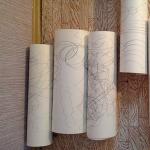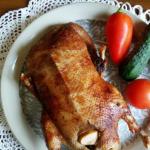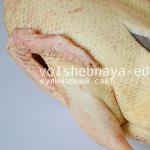You want to preserve any spicy plants, including mint, so that their use is possible in winter period. As a rule, drying is chosen for this. Drying refers to the cessation of biochemical processes that occur in plant cells. This method of harvesting is good because it prevents the development of various microorganisms and mold in the raw material. But under the influence of cellular enzymes during drying, a significant decrease in the taste and aromatic properties of plants is possible. To avoid this, such spices, like mint, you need to dry it properly. How to dry mint at home?
Preparing and collecting mint
Mint is harvested due to the fact that it has unique properties. It is not only an excellent spice to add to food or tea, but is also a cure for many diseases. Preparation and collection of mint should be carried out at certain times of the year, depending on which part of the plant you want to dry and for what purposes you want to use it.
- If you are going to dry the stems, then the most favorable time for this is the period of full flowering.
- If you plan to harvest leaves, then these parts of the plant are collected before flowering begins. But you need to wait until the inflorescences begin to form on the mint stems. The main thing is not to collect leaves from young mint for drying, since the aroma does not remain in them when dried, and they will not bring much benefit.
Mint should be collected in dry weather, otherwise it may turn brown after drying.
Time to pick mint
For storage purposes the time for collecting mint is only 2 months a year – June July . You can cut the plant when it has already fully bloomed, otherwise it will aromatic properties will not be able to fully manifest themselves. But if buds appear on young shoots of mint, it is possible to collect individual leaves from them.
Air humidity is of great importance at the time of mint collection, and therefore it is best to harvest mint in dry weather. If mint is collected on a day when there is dew on the leaves even in late morning, then after drying it will acquire a brown color rather than green. Cut mint stems should be immediately removed from direct sunlight.
You should be wary of harvesting medicinal plants in areas that are heavily fertilized, as well as on land located in close proximity to livestock farms and roads.
Rules for drying mint at home
Before you start drying mint at home, it is recommended not to wash the leaves or branches of the plant, but to wash the plant itself on the eve of collection and let it dry.
When drying mint at home, several rules must be followed. As soon as you have cut the stems of the plant, they need to be removed from sunlight, since the sun has an adverse effect on mint, as a result of which the healing herb loses its properties. essential oils, therefore, the benefit is lost. To dry, the stems of collected mint need to be combined into sparse bunches. Each of the bundles is tied up and placed in a suspended state in a covered room, in which proper ventilation must be ensured. An attic, balcony or veranda may be good for this purpose. This method of drying does not allow the plant to rot; it promotes good drying.
If you prepare mint leaves separately from the stems, then they need to be dried in a dark place. The leaves are placed on clean paper or a cloth. During harvesting, mint leaves should be turned over occasionally. The rules for drying mint at home say that the plant must be protected from dampness so that the natural medicine does not rot. To check the readiness of the product you need to take dried mint in your hands. If the stems or leaves crumble when slightly rubbed between your fingers, then the spice is ready.
How to dry mint for the winter?
To preserve dried mint throughout the winter, you should grind it, after which the resulting product is placed in a jar for storage. The container should have a tight-fitting lid. But the plant can also be stored in its entirety. How to dry mint for the winter in its entirety? To do this, you will need to prepare bags made of thin linen and place dried mint there.
Benefits of dried mint
Eating mint is useful for flatulence and heartburn. For this purpose, medicinal tea is prepared from the plant. To prepare this tea you need to pour 1 tbsp. hot water 1 tbsp. well dried mint, let it brew for 10 minutes. When added to such an infusion small amount honey, it turns out excellent remedy, which can be used for angina pectoris. In addition, dried mint is beneficial when taking baths to which mint decoction is added. This procedure may be useful in case of skin inflammation.
Contraindications to the use of mint
A contraindication to the use of mint is the presence. Representatives of the stronger sex should not get carried away with mint tea, as this jeopardizes their virility.

It is known that mint has a considerable number of beneficial properties, due to which it is often used in folk therapy for many diseases. The plant is also used in the creation of many culinary dishes to make them more tasty and aromatic. It is recommended that you familiarize yourself with how to dry mint in order to use the greens not only in the spring, but also in the winter.
To properly dry the collected greens, it is recommended that you familiarize yourself with the features of this process.
There are six important rules guidelines that should be followed when collecting mint for making tea or culinary dishes:
- You cannot collect herbs near industrial enterprises or roadways. This plant contains many trace elements that can harm humans. Also, the taste is much worse than mint grown in the garden.
- It is not recommended to pick young bushes for drying, as they are not yet ripe. Unripe greens have fewer beneficial properties and do not have a rich aroma.
- When harvesting, choose only those greens that have already bloomed. Before flowering, large mint leaves are collected, as they contain more essential oils.
- When cutting mint bushes with whole stems, they are cut by only a third, not completely. Thanks to this, after some time, new stems will appear at the cut sites, which in the future will also be cut and dried.
- Plants are collected only in sunny and dry weather during the day or after sunset. In the morning, there is dew on the surface of the leaves, which causes the leaves to darken and deteriorate during the drying process.
- When pruning, all leaves are carefully inspected in order to immediately weed out damaged material.
When to collect mint for drying
Before you start drying mint leaves, it is recommended to determine optimal time to collect them. If you collect mint at the wrong time, the likelihood of damage to the collected plants increases several times. Also, specimens that are too young cannot be used in cooking, as they are less fragrant.
It is necessary to start collecting when all the bushes are maximally filled with useful microelements and essential oils. This moment comes when the flowers appear. Often mint bushes begin to bloom in mid-summer and fade in the second half of August. That is why gardeners advise collecting during these months. However there is early varieties mints that ripen several months earlier.
In this case, you will have to postpone the work to the end of spring and the first half of summer.
During harvested used for medicinal purposes and cooking. Mint leaves are used as a flavoring additive to improve the taste of dishes.
Preparing mint
Before you start drying the collected mint leaves and storing them further, you need to do proper preparation greenery

After collecting any plant, it is washed. Therefore, all cut mint is washed in cold or heated water. This must be done carefully so as not to accidentally damage the plant, since any mechanical defects reduce the shelf life. When all the branches are washed, they are completely wiped with a towel or special paper napkins. Then all the wiped sheets are laid out on a small piece of cloth until they are completely dried.
To speed up drying, the plants are periodically wiped with a cloth or heated with a hairdryer.
All dried leaves are laid out in a row on a flat surface and carefully examined. If there are dark spots or damage on the surface of the leaves, it is better to get rid of them immediately.
Drying the plant
When drying mint stems at home, use various methods. It is recommended to familiarize yourself with the features of each of them.

On the street
Most often, drying is done outside under the sun's rays. Using this method, all plants are distributed into several small bunches. Then they are carefully tied with threads, laid out on a flat surface or hung on ropes. Experienced gardeners It is advised to dry mint in shaded areas so that the leaves do not deteriorate.
In the oven
Some people prefer to carry out the procedure not on the street, but in ovens. The main advantage of this method is its speed, since the branches are dried using this method in literally 20-30 minutes. First, the oven is preheated to 70 degrees, after which a tray with leaves is placed in it. The readiness of the plants is checked every 5-7 minutes. If you don't check the mint periodically, it will dry out and have to be thrown away.

How to store dried mint
To be able to add aromatic dried mint leaves to various dishes in winter, you should familiarize yourself with the peculiarities of their storage.
Mint is stored for the longest time in sealed containers that will not allow moisture to enter.
Therefore, food containers or glass jars are used for this. Some people use vacuum-sealed plastic bags.

Containers of dried herbs should be checked periodically to ensure there is no moisture. If the inside of the leaves is wet, you will have to dry them again and place them in other storage containers.
Conclusion
Housewives often prepare dried mint to use in winter. It is recommended to familiarize yourself in advance with the peculiarities of collecting mint leaves and drying them.
Only once a year each of us has the opportunity to harvest fresh mint and dry this spice for the winter. Read on to learn how to do this correctly.
ABOUT beneficial properties People have known this plant for a long time. Mint is used to treat certain diseases, added to food, prepared delicious drinks, flavored indoor air, and used in cosmetology. Since this useful and aromatic spice can only be prepared for future use in the summer, it is necessary to adhere to the rules for collecting mint in order to preserve as many useful substances as possible.
Rules for harvesting mint
How to properly collect raw materials for drying:
- Highways, industrial enterprises- Not the best place for collecting mint.
- It is better not to cut a young plant, because the aroma will not remain in it after drying. Young mint dries out greatly and does not retain its medicinal properties.
- If you collect mint along with the stems and want to dry it, then you need to wait until the plant has flowered.
- If you plan to collect and dry only mint leaves, then the leaves can be torn off before flowering begins, but after the inflorescences have formed.
- Mature plants contain the most essential oils, which means the aroma will remain even after the plant has dried.
- Please note that mint is at its most fragrant during flowering.
- The plant is cut for drying by 1/3 of the stem (the length of the main stem). Then you can have time to collect several more harvests during the season.
- Collection of raw materials should be carried out only when the dew has disappeared, in dry weather. If this is not taken into account, the mint will turn brown after drying.
- Sick and damaged leaves are not suitable for drying; they must be plucked and destroyed immediately.
How to dry mint at home
Freshly cut stems must be immediately removed dark room so that they don't get caught Sun rays, because the sun has a detrimental effect on freshly cut mint. The plant may lose some essential oils and nutrients.
How to dry mint:
- the collected raw materials must be carefully washed and removed excess moisture, placing it on a clean towel;
- Divide the raw materials into small bundles. They should not be thick;
- Tie each bundle with thread (linen), but not too tightly;
- Place the bundles in a dark, well-ventilated area. Ideal place for drying mint - this is the attic, veranda or balcony;
- plucked mint leaves are dried separately on a clean cloth or paper (newspaper and other printed publications- unsuitable);
- from time to time you need to stir the mint, turn the leaves over, check the bunches;
- cut mint does not like not only the sun, but also dampness;
- How can you tell if the mint is dry or if it needs a little more time? Take a mint leaf in your hands, knead it with your fingertips; if the leaves crumble during friction, this means that the mint has dried well.


How to store dry mint
Dried mint can be stored in any glass container. Check that the lid closes tightly. Periodically, you need to open the lid of the jar to allow the mint to “breathe.”
It is also possible to store mint in cotton bags tied with a rope. Store dry raw materials in bags and plastic film unacceptable, mint loses its aroma and may deteriorate.
Properly dried mint can be stored for 1-2 years.


Mint for drying is collected once a year, during its flowering period, the most active force: June – July. If you collect younger plants, then after drying they will not retain their strength and full aroma. For drying, either the leaves alone or the leaves along with the stems are collected.
It is recommended to collect mint for drying, like anything else, away from gas-polluted highways and contaminated areas. You should also not collect mint that still has morning dew on its leaves; you should let it dry, and only then start collecting the plant. After harvesting, mint should be immediately hidden from direct sunlight.
How to dry peppermint
If mint collected with stems is dried, then it should be tied into small bundles (in this case they will dry well) and hung to dry in a dark, well-ventilated room (balcony, attic, etc.).
If only mint leaves are dried, then they should be laid out to dry on a clean cloth or paper in the shade. You should stir from time to time.
Dried mint can be chopped, or you can store whole leaves. For storage, select a jar with a tight lid and place it in a cool, dark place. Instead of jars, you can also use linen (preferably cotton) bags.
There is probably not a single person who is not familiar with mint. Many people, while relaxing on a lake or river, tear whole bouquets of this fragrant herb in order to store it for future use. True, this mint is wild, and it is not so rich medicinal properties, like pepper, which is specially cultivated.
And if possible, it is better to harvest peppermint. Peppermint - perennial. It grows, occupying large areas, reproducing by rhizomes, which are located close to the surface of the earth and produce new shoots. And then a strong, pleasant “mint” aroma emanates from such thickets during flowering.
How to collect and dry mint
Flowers contain the most essential oil. That's why the most best time To harvest mint, it is time for its flowering, which occurs in July - early August. Then the plant is completely covered fragrant flowers and becomes more useful.
Choosing where to harvest mint is also very important. Like others medicinal plants, mint is not collected near roads, highways, factories or garbage dumps. To collect mint you need to choose environmentally friendly areas.
Mint sprigs should be cut along with the flowers.. To do this, choose dry, sunny weather, when the dew has already dried on the grass. The branches are not washed before drying, but if the plant is covered with dust, then it needs to be rinsed with a hose or at least with a watering can, and then allowed to dry thoroughly. If you dry mint even with a hint of moisture, its branches will darken, become moldy and disappear.
Cut mint stems should be placed in the shade as quickly as possible so that the essential oils do not evaporate.
If you need to dry mint with sprigs, then the cut stems are collected in a loose bunch, tied, and then hung with the inflorescences down on strings. And in this form they dry under a canopy or in the attic, but always with good air circulation.
If you only need to dry the leaves, then they are torn off at the very beginning of flowering, when the first buds appear. Leaves from a young plant are not harvested because they quickly lose their aroma. Spring mint is only suitable for making tea (it is used fresh).
To dry mint leaves, they are laid out in a shaded place on clean paper or cloth and dried for several days, turning them over periodically to prevent rotting from moisture. Otherwise, the leaves darken, become moldy and further storage and are no longer suitable for use.
Some types of herbs can be dried in the oven, but this does not apply to mint, because mint dried in the oven loses essential oils and its specific aroma. For the same reason, it is not advisable to dry mint near radiators and stoves.
How to store mint
Dried bunches of mint are stored in canvas bags that allow air to pass through well, or in cardboard boxes.
You can, before putting the mint away for storage, peel the leaves from the branches and put them in glass jar with lid.




